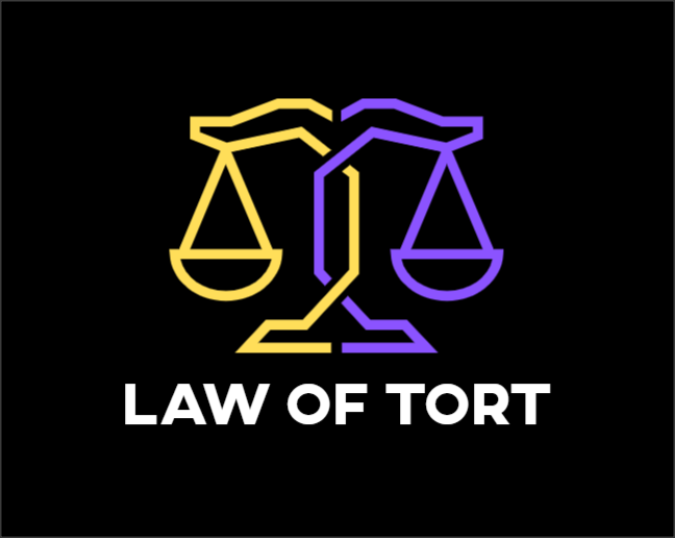This article is written by Indra Priyadarshini, a student of Alliance University, Bangalore. This article discusses the concept of Waiver of Tort Claims.
INTRODUCTION
Waiver of tort was an archaic remedy which enables the plaintiff to recover the benefit from their wrongdoing acquired by the defendant. This doctrine allows a plaintiff to waive the right to claim damages in tort and instead make an election to base the claim in restitution. Waiver of tort does not try to remedy a loss by restoring the corresponding gain from the defendant to the plaintiff. It is not yet attempting to penalise the defendant for their wrongful conduct. Instead, the waiver of tort tries to prohibit the defendant from taking advantage of their wrongful conduct by forcing the disgorgement of the corresponding gain. Thus, the amount legitimately claimed in the waiver of tort is equal to the amount that the defendant gains, net of any reasonable expenses incurred by the defendant in order to acquire that gain.
General Principles of Waiver of Tort
In The Law of Restitution, Maddaugh and McCamus explained that waiver of tort:
“…seems to have engendered an undue and needless complexity . . . In essence, the concept is really quite simple: in certain situations, where a tort has been committed, it may be to the plaintiff’s advantage to seek recovery of an unjust enrichment accruing to the defendant rather than normal tort damages.”
It is necessary to further explain the meaning of “waiver of tort” as this area of law is frequently clouded with ambiguous or imprecise terminology that leads to confusion regarding the principles of the doctrine. This confusion arose due to the use of the term ‘unjust enrichment’. Many jurists have often stated that the remedy is for “unjust enrichment” or for “restitution” while describing cases where the plaintiff’s remedy is estimated by the ill-gotten gain of the defendant. However, these references do not refer to the cause of unjust enrichment, which requires the pleading and establishment of some wrongful conduct which results in a corresponding loss to the plaintiff. This view requires a three-part “unjust enrichment” analysis:
- Enrichment of the defendant,
- Corresponding loss incurred by the plaintiff, and
- The lack of juristic reason for the enrichment.
Therefore, on a conceptual basis, it is more practical to refer to cases where disgorgement of the gains of the defendant is granted as cases of “wrongful enrichment”, “unjust enrichment by wrongdoing”, “restitution for wrongs”, or, “disgorgement”. The distinction between the cause of action for unjust enrichment and disgorgement remedy is reduced. In the former situation, the defendant has to “give back” the property obtained from the plaintiff, which is the corresponding loss. In the latter case, the defendant has to “give up” property obtained from any source as a result of the wrongful conduct against the plaintiff.
Is Waiver of Tort a Remedy or a Cause of Action?
The term “waiver of tort” was evolved from several English case laws which permitted the plaintiffs in tort cases to forgo or waive the tort and recover the gains acquired by the defendant’s wrongdoings, instead of the plaintiffs’ losses. This inapt choice of terminology has led to confusion about whether waiver of tort is a remedy or an independent cause of action. It is important to know this distinction. On one hand, if we consider waiver of tort as a remedy, then the plaintiff will first have to establish tort or some other cause of action before they can ‘waive the tort’. If that tort if negligence, then the plaintiff has to prove that they suffered damages due to wrongful conduct of the defendant. On the other hand, if we consider waiver of tort itself as a cause of action then a remedy will be available to the plaintiff irrespective of whether they prove the damages incurred by them. Class action plaintiffs have relied on the latter theory to support their claims that defendants’ conduct can be actionable if it put the class at risk of suffering damages, even if damages cannot be proved. In the landmark judgement of Atlantic Lottery Corp. Inc. v. Babstock, the Supreme Court of Canada finally dealt with this question and unambiguously answered that it is a remedy and not a cause of action.
The doctrine of waiver of tort originated as an effort to find a contractual basis for what was actually a restitution claim before the concept of restitution was recognized. Its origin lies in the phrase “waiver of tort and suit in assumpsit.” Assumpsit was the historical background of many “quasi-contract” restitution claims of the modern common law. When the concept waiver of tort first arose, it was assumed that the plaintiff really had to forgo or ‘waive’ the tort to bring an assumpsit claim. When the tort is waived, the plaintiff would actually be ratifying the defendant’s conduct and as a result create a quasi-contractual relationship that would enable the claim to be assumpsit. This then allowed the court to argue that the defendant had obtained the gains on behalf of the plaintiff. But all this was obviously an elaborate fiction. In the case of United Australia, Ltd. v. Barclay Bank, the House of Lords stated that the in cases of the so-called ‘waiver of tort’, the plaintiff does not have to waive a claim of tort or ratify the defendant’s tortious conduct.
Therefore, ‘waiver of tort’ a misleading name for a doctrine that permits the victim of the tortious behaviour to acquire disgorgement of gains instead of the compensatory damages. In tort, the damage at the time of conversion is taken as the value of the property. However, if the defendant has sold the property at a price exceeding the actual value, then a waiver or disgorgement of the tort claim would enable the plaintiff to recover the defendant’s gains and claim the full proceeds from the sale. Thus, the plaintiff does not have to forgo or ‘waive’ the tort. Rather the plaintiff can pursue the tort claim and then elect to ‘waive’ the remedy of damages, instead of claiming the gains obtained by the wrongful conduct of the defendant.
Disgorgement of Defendant’s Gain
Waiver of torture enables a plaintiff to claim disgorgement of the defendant’s ill-gotten gains. It is necessary to understand how ‘disgorgement damages’ differ from compensatory damages, punitive damages, and restitution damages in unjust enrichment. The objective of tort law is to compensate a plaintiff for any harmful and tortious conduct of the defendant. Thus, compensatory damages are the most common remedy in tort. Compensatory damages refer to the damages that compensate the plaintiff for the loss incurred due to the defendant’s wrongdoing. The aim is entirely on the loss of the plaintiff, regardless of whether the defendant gains anything.
Tort law also provides for punitive or aggravated damages in cases of grievous conduct over and above the loss suffered by the plaintiff. These are additional to the main claim for compensation, aimed at punishing the wrongdoing of the defendant in particular. Since the main objective of tort law is to compensate for the loss incurred rather than punishing the wrongdoer, awards for punitive damages are considerably rare.
The unjust enrichment attempts to restore a gain that was unjustly acquired by the defendant to the plaintiff. A claim in unjust enrichment may lie without any wrongful conduct of the defendant, but it cannot lie without any loss incurred by the plaintiff. The loss and the gain must correspond. So, while unjust enrichment provides a gain-based remedy, that remedy is connected to the loss incurred by the plaintiff. The plaintiff does not necessarily recover all that is gained by the defendant, only the amount lost is recovered. In essence, restitution damages are a refund.
Waiver of tort focuses more on the loss incurred by the plaintiff rather that the gain of the defendant. The main reason for the development of waiver of tort is that it would be unjust and unfair to allow a defendant to take advantage of their wrongful and tortious conduct. The amount lost by the plaintiff is irrelevant while determining the damage, instead the focus shifts on the amount gained by the defendant. Thus, unlike restitutionary damages in unjust enrichment, damage to disgorgement waiver of tort may exceed the amount of the loss incurred by the plaintiff.
“Briefly put, restitution damages are limited to those benefits wrongly acquired from the plaintiff, whereas disgorgement damages include any gain that the defendant received as a result of committing a wrong against the plaintiff. So, while restitutionary damages are only capable of stripping gains that the defendant acquired from the plaintiff, disgorgement damages are able to strip gains acquired from any source, including. but not limited to, the plaintiff.”
CONCLUSION
The doctrine of Waiver of Tort solely focuses on the defendant’s ill-gotten gains instead of the plaintiff’s loss and strips that gain without going into the punitive by exceeding the amount that was gained. Although there is no direct jurisprudence to prove that this is the right approach, and also the fact that real-life cases will create more complications, we can believe that this is a logical and reasonable starting point for attempting to understand the concept of waiver of tort.
Latest Posts
- Job opportunity at EXO Edge, Sahibzada Ajit Singh Nagar, Punjab, India: Apply Now!!

- Internship opportunity at Vishwas Advisors, Kalyan, Maharashtra, India: Apply Now!!

- Internship opportunity at Kulfi Collective, Mumbai, Maharashtra, India: Apply Now!

- Job opportunity at The Neotia University, Diamond Harbour, West Bengal, India: Apply Now !!

- Job opportunity at Morgan Stanley, Mumbai, Maharashtra, India: Apply Now!!

- Job opportunity at VISA INTELLIGENCE CONSULTANCY LLP, New Delhi, Delhi, India: Apply Now!!

- Job opportunity at Amazon Web Services (AWS), Gurugram, Haryana, India: Apply Now!!

- Job opportunity at Stelcore Management Services Private Limited, Mumbai, Maharashtra, India: Apply Now!!

- Job opportunity at Zscaler, Sahibzada Ajit Singh Nagar, Punjab, India: Apply Now!!

- Job opportunity at Irish Expert, Delhi, India: Apply Now!!

- Job opportunity at UnitedLex · Gurgaon, Haryana, India: Apply Now!

- Internship opportunity at Vineforce · Nabha, Punjab, India: Apply Now!!

- CLAT-Peeps! (10)
- Current Affairs (2)
- competitions (132)
- Conferences and Seminars (201)
- Webinar (1)
- Course and Workshops (107)
- Debates (46)
- Eassy Competitions (69)
- Fellowships & Scholarships (56)
- Guest Blogs (6)
- important (29)
- Internships and Jobs (2,317)
- interviews (8)
- moot court (180)
- Opportuintes (2,731)
- Job Opportunity (1,191)
- opportunity (2,559)
- Call for papers (475)
- Quizes,fests and others (298)
- Work Opportunity (836)
- Our Blog (1,049)
- Administrative Law (17)
- ADR (13)
- Arms Act (2)
- Case Analysis (205)
- Company law (36)
- Constitutional Law (143)
- Consumer Protection Act (17)
- Contract Law (62)
- CPC (10)
- Criminal Law (140)
- Cyber Law (13)
- Environmental Laws (30)
- Evidence Act (20)
- Family Law (12)
- General (205)
- International Humanitarian Law (8)
- International law (23)
- IPR (10)
- Jurisprudence (13)
- labor laws (7)
- Maritime Laws (1)
- Partnership Act (2)
- personal law (33)
- Taxation (10)
- Tort (64)
- Transfer of Property (2)
- Our Services (11)
- career advice (2)
- others (6)
- Top Stories (524)
- Uncategorized (720)
Archives
- November 2023
- October 2023
- September 2023
- August 2023
- July 2023
- June 2023
- May 2023
- April 2023
- March 2023
- February 2023
- January 2023
- December 2022
- November 2022
- October 2022
- September 2022
- August 2022
- July 2022
- June 2022
- May 2022
- April 2022
- March 2022
- February 2022
- January 2022
- December 2021
- November 2021
- October 2021
- September 2021
- August 2021
- July 2021
- June 2021
- May 2021
- April 2021
- March 2021
- February 2021
- January 2021
- December 2020
- November 2020
- October 2020
- September 2020
- August 2020
- July 2020
- June 2020
- May 2020
- April 2020
- February 2020
- January 2020
- November 2019

